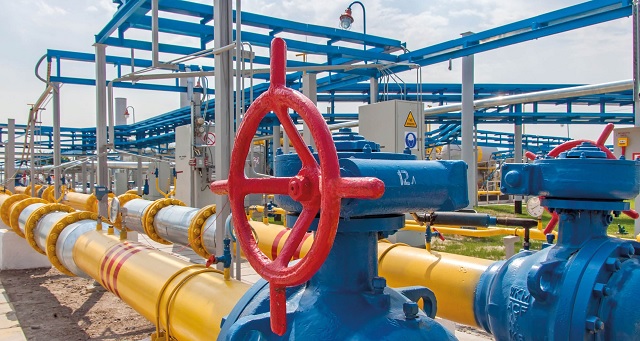By Leilah Bbaale
Cabinet has approved China National Offshore Oil Corporation- CNOOC Uganda Limited to proceed with the construction of a Liquefied Petroleum Gas (LPG) facility in the Kingfisher development area. The state minister in charge of national guidance, Godfrey Kabbyanga revealed this during the cabinet briefing at the Uganda Media Centre in Kampala.
The approval marks another significant milestone for the company, which has already mobilized equipment and commenced oil drilling activities at its Kingfisher Oil field in Kyangwali Sub-County, Kikuube District, located in mid-western Uganda.
Last year, CNOOC Uganda Ltd submitted an application to the government for a license to produce and distribute Liquefied Petroleum Gas and electricity generated from the gas resources located at its Kingfisher oil field.
Uganda has committed to preventing gas flaring as it moves forward with its oil production endeavors in the Albertine region. Despite calls from Western nations to abandon oil and gas developments, experts say many of them still partake in gas-flaring practices.
Eng Geoffrey Ogwang, the Commissioner Midstream (DOP) at the Ministry of Energy and Mineral Development, says the approval for the construction and establishment of the LPG facility is timely, aiming to complete it before the anticipated first oil drop in 2025. He adds the goal is to ensure that the facility is operational by the time oil extraction begins, mitigating the risk of gas flaring.
Ogwang highlights that the inception of the LPG facility marks a significant step for Uganda in advancing its clean energy initiatives. Stressing the double benefit, he underscores that the produced LPG not only meets energy demands but also plays a crucial role in promoting environmental sustainability.
Apart from LPG, the leading Chinese oil giant in Uganda’s energy sector, holding one-third interests in both Exploration Areas and Kingfisher plans to harness electricity from the gas resources.
In 2022, the company submitted a license application to the Electricity Regulatory Authority (ERA) to initiate a 39.1MW gas-to-power project at the Kingfisher oil field.
Available information shows that the gas-to-power project is critical in ensuring that it meets its oil production target at the Kingfisher. From the non-technical summary, and environmental and social impact assessment report for the project, the oil company intends to produce 40,000 barrels per day. “9.1 MM standard cubic feet of gas: to be used to generate electricity and to produce LPG (liquid petroleum gas) for sale specifically into the local market,” the report reads in part.
The report also shows that Electricity will be generated at the Central Processing Facility from fuel gas used and supplied to project infrastructure by way of underground cables buried in flow line trenches. “In the first 10/11 years, the CPF will generate more electricity than the project needs, and CNOOC will sell it to the government through a connection to the national grid,” adds the report.
But, in the said 10 – 11 years the volumes of gas are expected to reduce, and power lines will be used in the reverse direction to import power from the national grid. However, as indicated in the report, the government will bear the responsibility for establishing and constructing the power line infrastructure.
Failure by the government to implement the necessary infrastructure before the commencement of oil production could potentially leave the company with no alternative but to resort to gas flaring. As per the Global Gas Flaring Reduction Partnership (GGFR), gas flaring is deemed a wasteful practice that involves burning a valuable energy source.
This energy source could be utilized to promote economic development, enhance energy security, and potentially substitute for more environmentally harmful energy sources.



